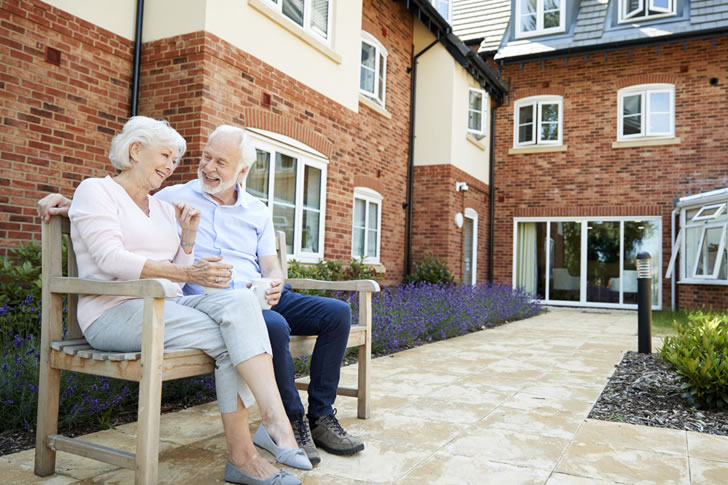Cheap Senior Apartments
As the population ages, more seniors are searching for suitable living arrangements that provide comfort and community without breaking the bank. Exploring affordable options for senior apartments is crucial as it ensures that senior citizens can find a place where they feel supported and connected, all while preserving their financial independence. This article delves into various affordable housing options for seniors, important aspects to consider, and where to find the best deals.

Understanding the Needs of Senior Citizens
Before diving into the specifics of affordable senior apartments, it’s essential to understand what makes these residences different from other housing options. Senior apartments typically cater to the 55 and older demographic. These facilities differ from general housing in that they often offer easier accessibility, smaller spaces, minimal maintenance, and amenities targeting older adults’ needs. This might include community rooms, wellness programs, and on-site healthcare services. Affordability in senior housing means balancing cost with accessible medical care, security, and comfortable living environments.
The Range of Affordable Senior Housing Options
Affordable senior housing comes in various shapes and sizes, from government-sponsored programs to private pay units that base rent on income. The U.S. Department of Housing and Urban Development (HUD) offers programs such as Section 202, which supports housing for lower-income seniors. This program provides capital advances to private, nonprofit sponsors to finance the development of housing for elderly residents. Additionally, HUD backs rent subsidies, allowing seniors to reside in these apartments for only 30% of their monthly income.
Another cost-effective solution is Low-Income Housing Tax Credit (LIHTC) properties. These are typically part of multifamily complexes and are built or renovated with the help of federal tax credits. Rents at LIHTC properties are often lower than market rates and are a good middle-ground option for seniors who earn too much to qualify for primary public assistance but still need a reduced rent setup. According to a report by CBRE Group, Inc., over 2.2 million affordable apartment units have been created under the LIHTC program.
Factors to Consider When Choosing a Senior Apartment
When searching for the right senior apartment, it’s important to consider several factors beyond just affordability. Location is key. Proximity to essential services like grocery stores, medical facilities, and even recreational areas plays a significant role in everyday comfort and convenience. Safety features such as in-unit emergency response systems, secure entrances, and well-lit common areas are also essential for seniors. Finally, consider the community aspect. Social interaction can greatly impact quality of life, so facilities offering group activities or common areas can be beneficial.
Steps to Finding an Affordable Senior Apartment
Starting your search for an affordable senior apartment can initially seem daunting. First, it’s useful to contact local senior centers or offices on aging. These organizations can provide listings and recommendations on both public and private housing options. Additionally, visiting websites such as HUD’s website can offer guidance and directions to subsidized senior apartments in your area.
Applying for government-assisted housing requires preparation. Interested seniors should collect necessary documentation such as proof of income, identification, and age verification in advance. Due to high demand and limited spaces, there can be waiting lists, so applying as early as possible is recommended.
For those interested in LIHTC apartments, contacting the property management directly for vacancy information and specific eligibility requirements, such as earning limits, is crucial. Often, these properties have separate waitlists and application processes compared to federally funded setups.
Real-Life Examples and Success Stories
Real-world examples demonstrate the impact affordable senior housing can have on individuals’ lives. In Denver, Colorado, the Kavod Senior Life Apartments offer affordable living spaces for seniors following the HUD guidelines, providing various amenities including a fitness center, library, and computer room. One resident, a former teacher, reported how moving there allowed her to maintain her independence while engaging in a variety of community activities, vastly improving her overall happiness and well-being.
Similarly, the Bethany Village in Central Pennsylvania provides not only assisted living but also a life lease model where residents can purchase a lease that guarantees housing for life without the worries of traditional homeownership. This arrangement enables seniors to enjoy community living without the financial stress of fluctuating real estate markets.
Conclusion
In conclusion, finding the right affordable senior apartment requires a combination of understanding what’s available, knowing what priorities to focus on, and actively seeking out solutions. By utilizing resources like those offered through HUD, LIHTC, and local aging offices, seniors can find reputable housing that fits their financial situation and lifestyle needs. Affordable senior housing not only eases the financial burden but also improves the quality of life, allowing seniors to live independently and comfortably with the support that aging gracefully requires.







Recent Comments